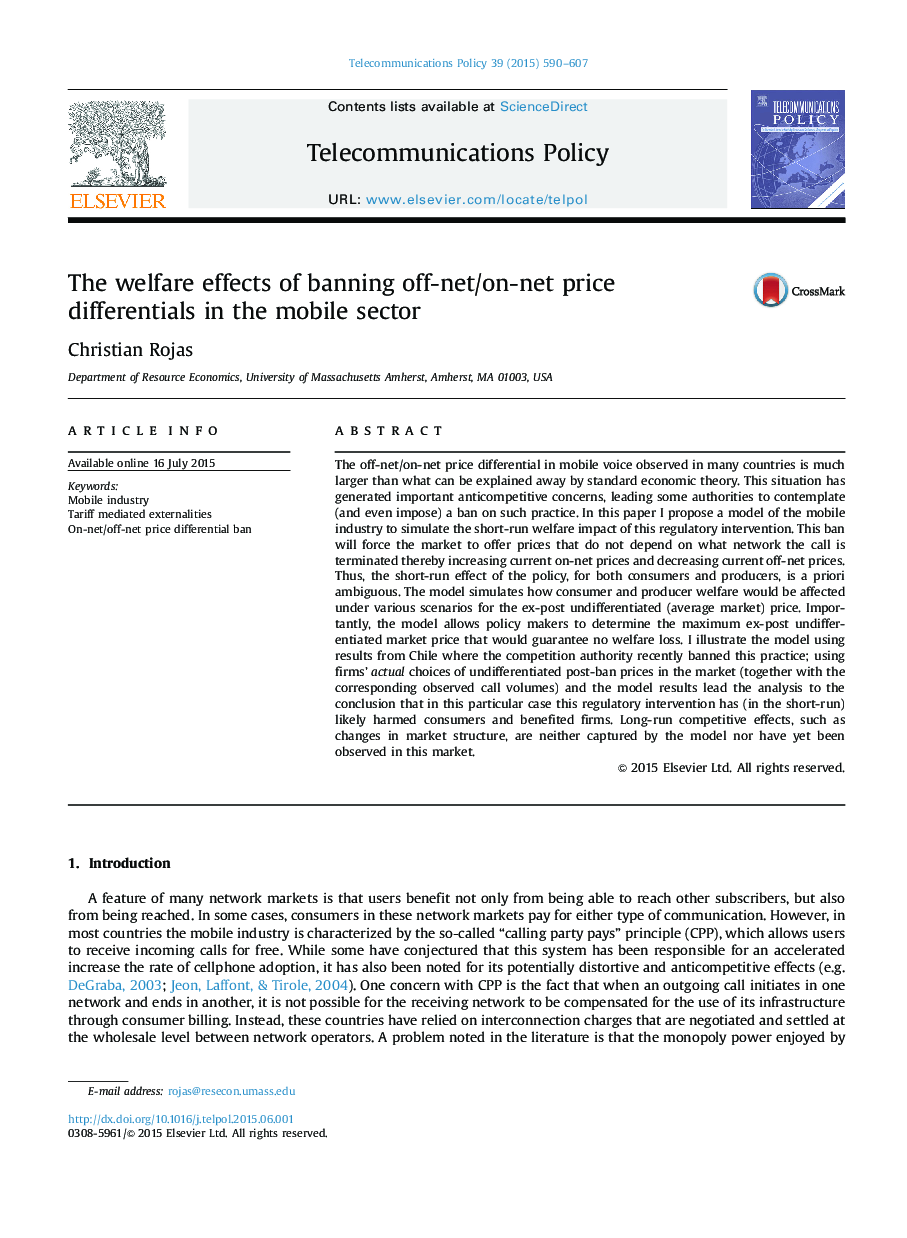| Article ID | Journal | Published Year | Pages | File Type |
|---|---|---|---|---|
| 556611 | Telecommunications Policy | 2015 | 18 Pages |
•The model measures the impact of the off-net/on-net price differential ban on the mobile sector.•The model is motivated by industries with linear tariffs (instead of a two-part tariffs).•I calibrate the model to the case of Chile where a ban was imposed in 2014.•My simulation results and data from the market after the ban suggest a negative effect of the policy.
The off-net/on-net price differential in mobile voice observed in many countries is much larger than what can be explained away by standard economic theory. This situation has generated important anticompetitive concerns, leading some authorities to contemplate (and even impose) a ban on such practice. In this paper I propose a model of the mobile industry to simulate the short-run welfare impact of this regulatory intervention. This ban will force the market to offer prices that do not depend on what network the call is terminated thereby increasing current on-net prices and decreasing current off-net prices. Thus, the short-run effect of the policy, for both consumers and producers, is a priori ambiguous. The model simulates how consumer and producer welfare would be affected under various scenarios for the ex-post undifferentiated (average market) price. Importantly, the model allows policy makers to determine the maximum ex-post undifferentiated market price that would guarantee no welfare loss. I illustrate the model using results from Chile where the competition authority recently banned this practice; using firms’ actual choices of undifferentiated post-ban prices in the market (together with the corresponding observed call volumes) and the model results lead the analysis to the conclusion that in this particular case this regulatory intervention has (in the short-run) likely harmed consumers and benefited firms. Long-run competitive effects, such as changes in market structure, are neither captured by the model nor have yet been observed in this market.
